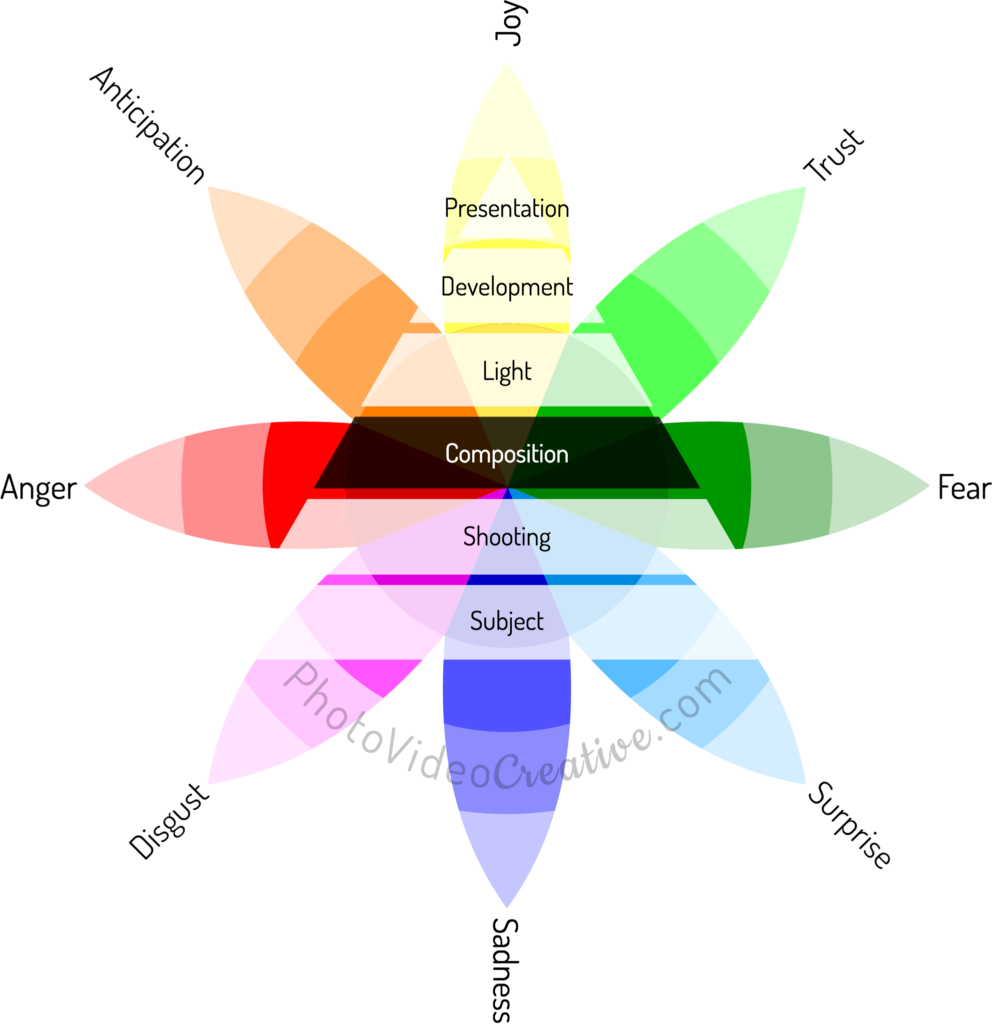Introduction
To make great photos, you have to realize why you take photos: it is not only to get a souvenir but to remember your deepest emotions in picture. You too can understand what emotions are. I have designed a 6-step method to learn photography with what you feel: how to capture and share your emotions in photos.

If you have not read it the first 2 levels of my method, start with:
- Step #1: Mastering Your Subject
- Step #2: Mastering Your Shooting
What is Composition?
In painting or drawing, the composition is the layout of the content inside the image. More specifically in photography, the composition is the application of a rectangular frame around the subject and the placement of this subject in relation to its environment.
In other words, it is the position of your camera around your subject (near / far, top / bottom, above or below) and your lens field of view (wide angle, standard or tele) which will determine the composition of your photo.
What is the Purpose of Composition?
For a viewer to really care about your photo, he must be hooked by your content.
Putting a frame around your subject is a first step to isolate it from its environment. You invite the viewer to consider your subject as worthy of interest. But for the viewer to really stop on the photo, his brain must be instinctively stimulated or even embarrassed by what he sees.
By being attentive about the picture, the viewer becomes more receptive to the emotions you have captured and want to share.
Thus, a good composition is built on a false equilibrium, a tension, a disturbance, a structure or dynamics that oblige the viewer to understand the photo and to go through it with his eyes. A good composition is like a magnifying glass in your photographer field of vision on a subject that would have been left unnoticed by the average person.
On the contrary, a composition can be missed because of:
- An ordinary composition (e.g. a portrait with a face in the center of the photo),
- A too messy composition (e.g. too many elements dilute the attention of the viewer),
- A composition radically opposed to the emotions experienced by the photographer (for example, a too pronounced perspective effect that distorts the face of a portrait)
3 Types of Composition and Their Aroused Emotions
Composition is a creative tool with infinite possibilities in photography.
Some composition techniques generate emotions on their own, like the composition with a specific camera angle on the subject. But most composition techniques first reinforce the emotions aroused by the subject itself, without distorting them.
Any composition technique is rarely used alone, but rather combined together. It’s up to you to find the chords that resonate with your emotions!
I will present the main techniques of composition that I have grouped in 3 types.
1. Compositions with the Frame
- Off-center Subject: the Rule of Thirds
- Off-center Subject: the Golden Spiral (coming soon)
- Tight Framing, Wide Framing
- Portrait vs Landscape Orientation
- Aspect Ratio
2. Compositions with the Space
Compositions that play on the orientation, the depth and the volume of the subject:
- The Camera Angles
- The Perspective (coming soon)
- The Layers Effect (coming soon)
3. Compositions with the Content
- Guideline and Line of Force (coming soon)
- Void and Negative Space (coming soon)
- Compositions with Contrast: Tone, Color, Shape and Patterns (coming soon)
What Do You Think?
Do you feel that you are making pictures that have no specific composition? Were you aware that you could have multiple composition techniques? What composition technique do you want to try on now?
Leave me your comments, I will answer with pleasure.
Let’s Go On Together!
Learn how to photograph with my 6-step method to make your photos first with your emotions. An intuitive approach that focus on you and what you are feeling, before being helped by techniques and tools!
Explore the different steps of my method:
- Step #1: Mastering Your Subject
- Step #2: Mastering Your Shooting
- Step #3: Mastering Your Composition (this post)
- Step #4: Mastering the Light
- Step #5: Mastering Your Development
- Step #6: Mastering Your Presentation (soon)
Do not miss my future posts to better capture and share your emotions in picture: subscribe to my newsletter and get my free eBook!
Do you like what you’ve learned? Share this article with your loved ones!